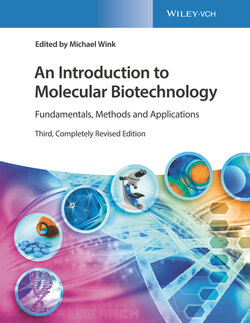Читать книгу An Introduction to Molecular Biotechnology - Группа авторов - Страница 54
6 Evolution and Diversity of Organisms
ОглавлениеMichael Wink
Heidelberg University, Institute of Pharmacy and Molecular Biotechnology (IPMB), Im Neuenheimer Feld 329, 69120 Heidelberg, Germany
Molecular cell biology focuses more and more on model organisms. Examples are, among others, the Gram‐negative bacteria Escherichia coli, the brewer's yeast (Saccharomyces cerevisiae), the nematode worm (Caenorhabditis elegans), the fruit fly (Drosophila melanogaster), the common mouse (Mus musculus), the zebra fish (Danio rerio), the human (Homo sapiens), and wall cress (Arabidopsis thaliana) as a representative of higher plants. Extensive knowledge about molecular and cellular biology was gained from these model organisms. As these organisms share a common evolutionary history, it is assumed that basic characteristics found in one model organism are also valid for all other organisms. This can, but must not always, be true. In some cases nature has also found different solutions to the same problem (convergent evolution). Nevertheless, we see an astonishing degree of similarity in fundamental mechanisms and structures.
However, there is also an astonishing diversity at the organismal level. In the future of biotechnology, we must not ignore the diversity of organisms, with presently known 2 million species (perhaps over 10 million species exist) and complex adaptations. Many of them offer evolutionarily derived solutions for problems that are of great interest for biotechnological purposes or applications.
